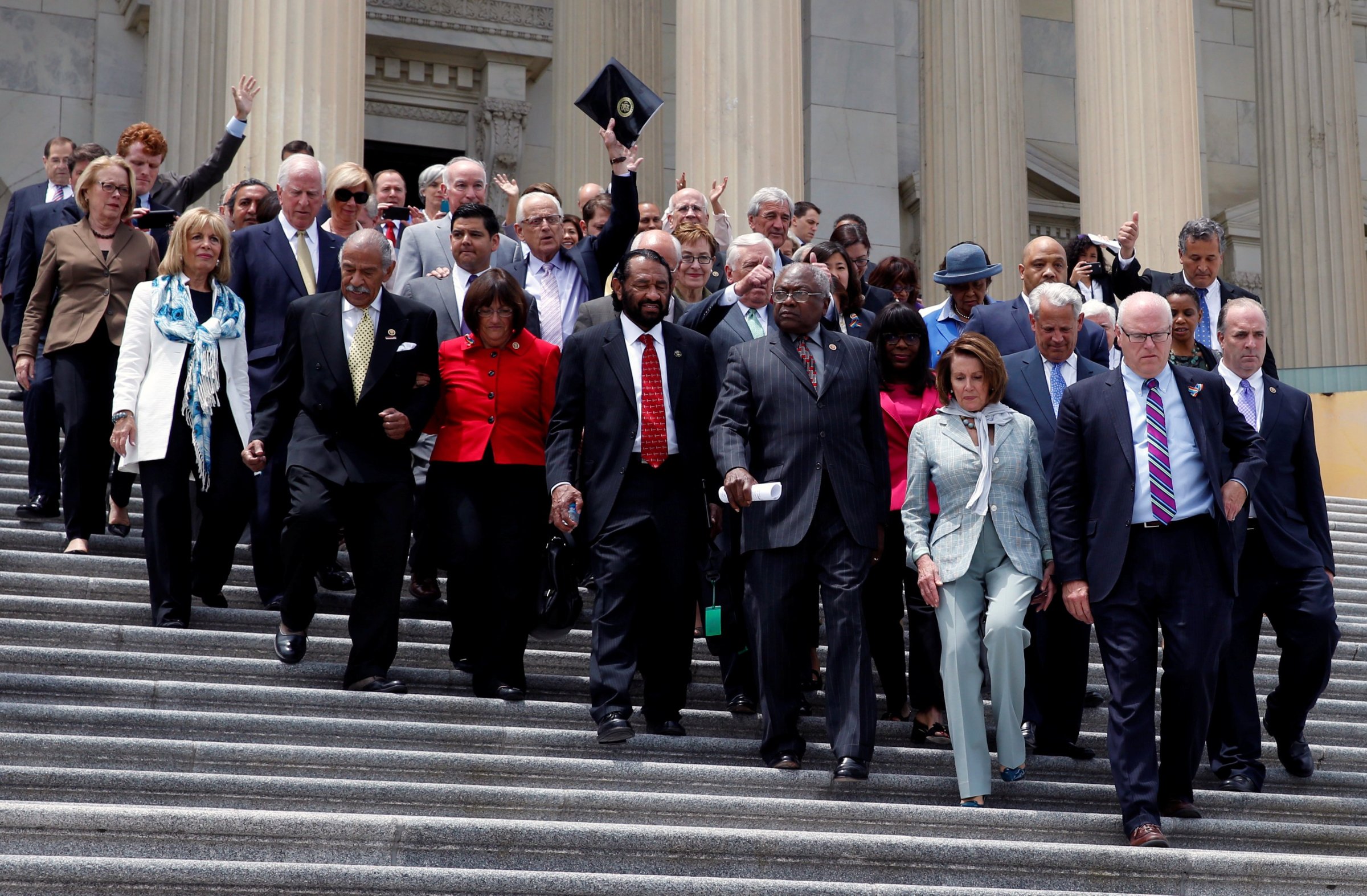
The Democrats’ sit-in on Capitol Hill for gun control legislation may have ended, but the politics of fundraising and voter engagement continue.
While Rep. John Lewis, Minority Leader Nancy Pelosi, Rep. Steny Hoyer and others occupied the House building for a total of nearly 25 hours, Democratic-aligned groups outside the Capitol engaged in an intensive voter outreach effort to try to apply more leverage on lawmakers and raise funds for their longer-term efforts.
The Democratic Congressional Campaign Committee, the Michael Bloomberg-backed Everytown for Gun Safety and the Brady Campaign to Prevent Gun Violence reached out to their email lists during the sit-in, asking them to contact lawmakers. The DCCC raised grassroots dollars. And the groups plan to continue in the coming days.
The efforts are part of a larger push to pass stricter gun laws: most Democrats are in favor of universal background checks on gun purchases, including at gun shows and on the Internet.
House Speaker Paul Ryan, a Republican, said on Wednesday that the Democrats’ sit-in was a “publicity stunt.”
“This is not about a solution to a problem. This is about trying to get attention,” Ryan said.
Democrats disputed his characterization, saying it was a key effort to get gun legislation that polling shows a majority of Americans support.
“Paul Ryan saying this is a driving force behind the action on the floor is offensive and inaccurate, and really just a defense against his failure to bring a bill to the floor,” said Meredith Kelly, national press secretary for the DCCC.
Everytown for Gun Safety, a well-funded group which seeks to act as a counter to the National Rifle Association, sent out a flurry of emails asking its supporters to tweet and call members of Congress.
In all, people contacted by Everytown made 68,000 calls to Senators and 175,000 calls to members of the House, and the group collected more than 200,000 signatures for two separate petitions. Everytown sent out email blasts as well text messages to its list encouraging supporters of the sit-in to meet up at solidarity gatherings.
The groups’ voter outreach actions were an example of how gun control proponents worked behind the scenes to leverage the sit-in and grow their member base and cash resources, as well as apply pressure on lawmakers. In recent years, Republicans have been particularly adept at leveraging highly public actions on the floor, like Ted Cruz’s 21-hour speech in 2013 denouncing Obamacare, using them to galvanize grassroots support.
Since the start of the sit-in, more than 130,000 Democrats signed a DCCC petition to demand Republican action on gun safety. The party committee blasted emails asking for signatures, and then began asking for donations from its list. “WE. ARE. DISGUSTED,” said one email asking for “24,000 gifts in the door to kick them,” or Republicans, “out of office.”
The Democratic National Committee, now tasked with helping Hillary Clinton get elected to the White House, also sent out a petition email on Thursday afternoon after the sit-in ended. The Brady Campaign has directed a flurry supporter calls to Ryan’s office.
Democrats have said they plan to start the sit-in back up when Congress returns after the July 4th recess. Everytown also plans to send allies to bird-dog, or publicly question, targeted members of Congress at public events during the upcoming break.
More Must-Reads from TIME
- Donald Trump Is TIME's 2024 Person of the Year
- Why We Chose Trump as Person of the Year
- Is Intermittent Fasting Good or Bad for You?
- The 100 Must-Read Books of 2024
- The 20 Best Christmas TV Episodes
- Column: If Optimism Feels Ridiculous Now, Try Hope
- The Future of Climate Action Is Trade Policy
- Merle Bombardieri Is Helping People Make the Baby Decision
Contact us at letters@time.com